The roan horse, with its distinctively flecked coat, has captivated equine enthusiasts for centuries. These horses are not only visually striking but also carry a rich heritage that intertwines with human history. Understanding and recognizing the roan horse characteristics, their genetics, and care are crucial for anyone interested in this unique color pattern. This comprehensive exploration delves into the world of roan horses, shedding light on their history, types, and the special considerations needed for their breeding and maintenance.
Appreciating the Splendor of Roan Horses
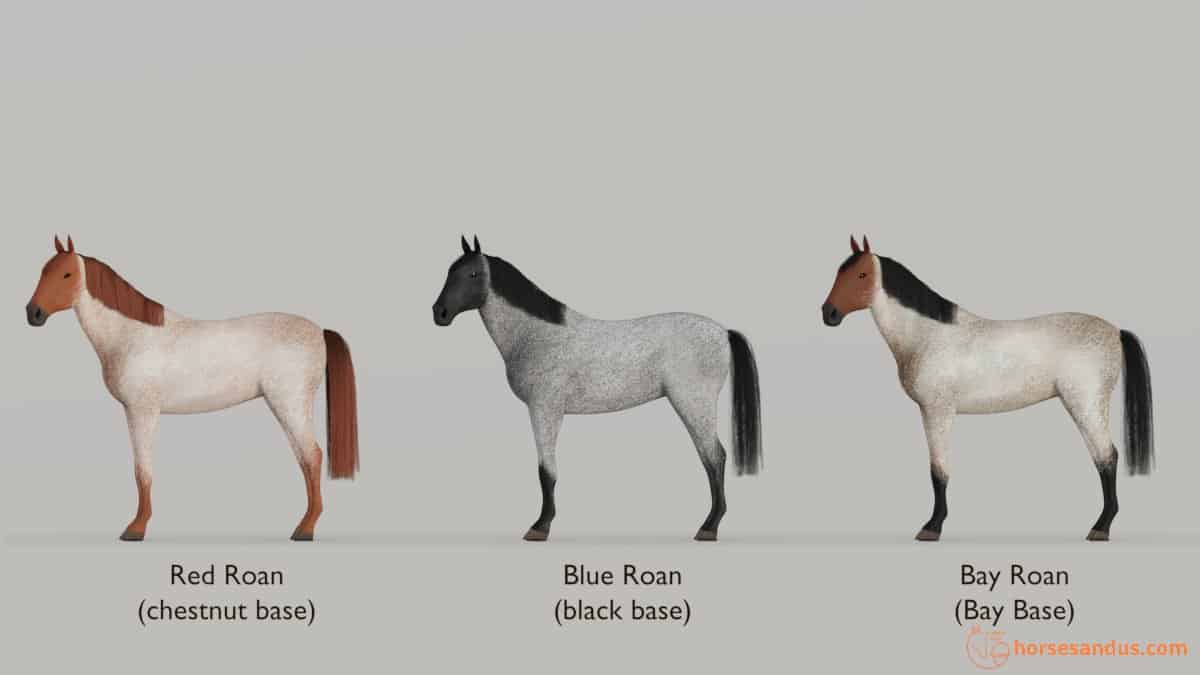
The allure of roan horses is undeniable, with their unique coats resembling a canvas sprinkled with white against a richer base color. Such a mesmerizing appearance has made them highly sought after in the equine community for their distinctive beauty. The intermingling of hairs gives them a dynamic appearance that catches the eye whether the animal is at rest or in full stride.
Distinguishing Features of Roan Equines
Discerning the features of a roan equine requires a keen eye, as it is necessary to recognize the specific attributes of their coat. Notable characteristics include the uniform scattering of white hairs contrasted with the base coat, with less mixing on the head, mane, tail, and legs. The visual impact of these traits is what creates the identifiable and varied roan patterns.
Tracing the Historical Significance of Roans
The mark of roan horses on history is indelible, reflecting their intertwined evolution with human societies. These horses have been integral to various historical epochs, serving roles from elite cavalry mounts to vital assets in agrarian lifestyles. Their esteemed lineage is documented across numerous cultures, highlighting their prominence in different eras and societies.
Understanding Roan Coat Variations
The examination of roan coat variations unveils an array of colors influenced by different factors. Seasonal changes, along with age and environmental conditions, can alter the roan pattern’s appearance, although the roan signature remains constant through these fluctuations.
Decoding the Roan Genetic Puzzle
A deep dive into the genetics of the roan coloration uncovers a fascinating genetic mechanism responsible for their signature look. The inheritance of the roan trait is multifaceted, leading to a variety of roan expressions in the equine population. For breeders, knowledge of these genetic intricacies is essential in cultivating the desired roan traits within their herds.
Contribution to Roan Heritage
Preserving the roan heritage is a responsibility that breeders and enthusiasts take seriously. Accurate identification of these horses goes beyond their striking appearance; it encompasses an understanding of their genetic and physical attributes. This attention to detail is vital in perpetuating the purity of the roan lineage.
Our fascination with roan horses is a reflection of their historical significance and the role they play in the equestrian world today. As we honor their past, we also look forward to their future contributions and the continued admiration they elicit with their poise and adaptability.
Roan Horse Color Patterns: A Detailed Examination
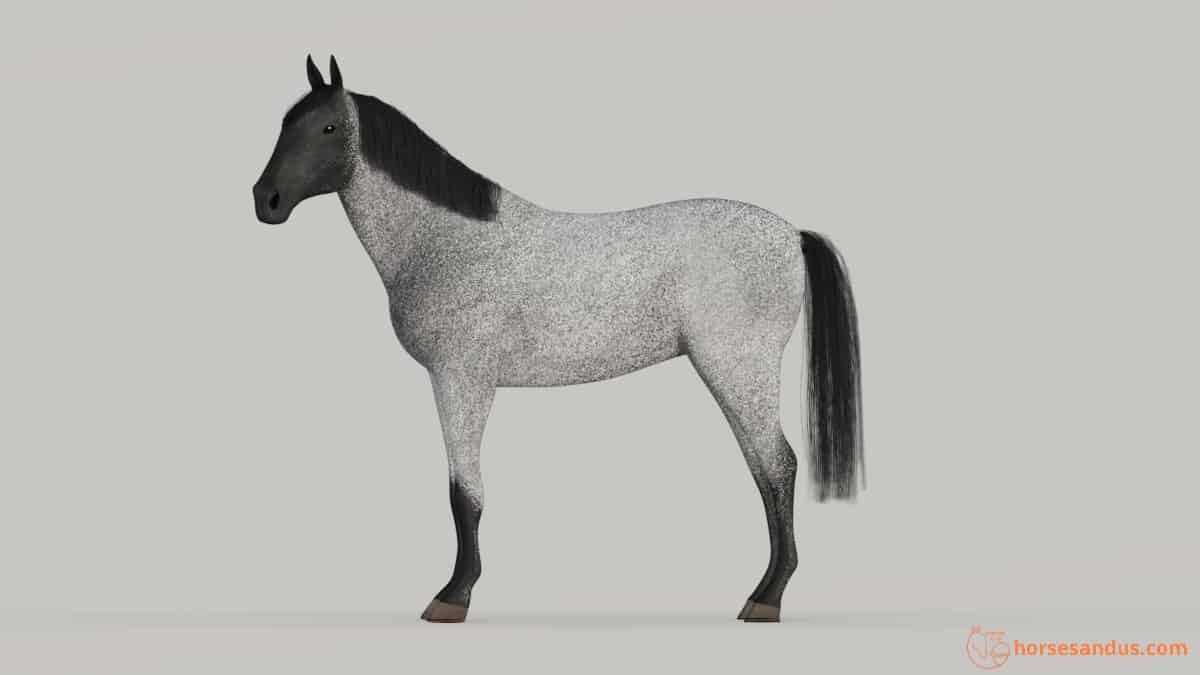
Recognizing the unique color patterns of a roan horse extends beyond a surface-level admiration, requiring a meticulous examination of their intricate coat designs. For breeders and equine aficionados, it’s crucial to discern these patterns accurately to maintain the breed’s standards and ensure genetic integrity. Detailed knowledge of the coat’s manifestation and classification is essential for the preservation of the breed’s esteemed traits.
Complexities in Roan Coloring
Close observation of roan coat patterns reveals a sophisticated blend of the base color intermixed with white strands. The base hue may vary broadly, yet it’s the distinctive roan overlay that captures attention. The uniqueness of each horse, highlighted by the individual patterns and density of white hairs, enriches the roan spectrum and poses a delightful challenge to those seeking to fully comprehend its intricacies.
Contrasting Hues: Red Roan and Blue Roan
The enchanting red roan is characterized by a chestnut or sorrel base intermingled with the roan overlay, emitting a warm, vibrant glow. On the other hand, blue roans showcase a black base beneath their roan pattern, projecting an aura of robustness and intensity. These two popular roan shades, with their distinctive visual appeal, have cemented their unique identities within the equine color palette.
Diverse Roan Horse Palette
The roan family’s diversity extends beyond the red and blue variants, with each contributing to the roan coat’s rich diversity. Among these are:
- Strawberry roans, with their pinkish tint combined with the roan pattern, offer a delicate, blushed look.
- Brown roans, which may appear almost black at first glance, reveal their true roan nature upon closer examination.
- Few-spot roans, distinguished by their predominantly white appearance with minimal colored hair distribution.
These variations not only enhance the roan population’s diversity but also deepen collective insights into roan coat dynamics.
Rare and Refined Roan Shades
Among the less prevalent roan variations are:
- Silver roans, which display a silver or grayish hue, often paired with a darker mane and tail.
- Honey roans, whose light, warm base color imparts a golden sheen over the roan pattern.
These subtle distinctions highlight the complexity of roan color patterns, underscoring the importance of precise and informed identification.
Enhancing Roan Identification Techniques
Those committed to the skillful identification of roan horses should consider the entire phenotype, not solely the coat color. External factors such as the horse’s age, seasonal changes, and lighting conditions can affect the visual interpretation of the roan pattern. Cultivating this expertise necessitates both practical experience and a comprehensive grasp of the diverse roan genotypes that give rise to the array of coat patterns observed.
Exploring Roan Horse Diversity
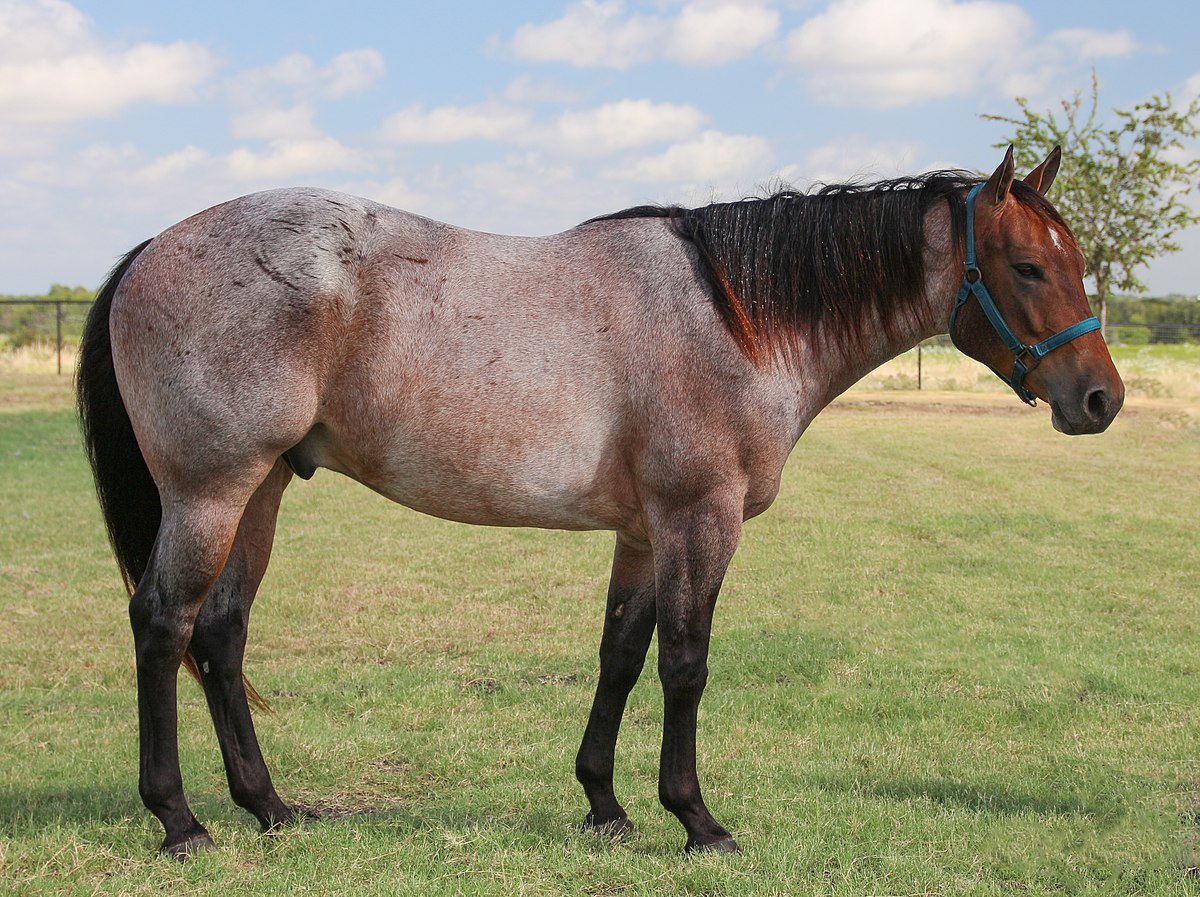
In the equine world, the presence of roan coat genetics is a testament to the fascinating variation within horse colorations. The roan pattern, characterized by a mix of pigmented and white hairs across the body, sparing the face, mane, tail, and lower legs, offers a stunning genetic expression. This genetic signature not only enhances the horses’ beauty but also influences their categorization among horse enthusiasts.
Classic and Coveted Roan Types
The classic roan types, including red, blue, and strawberry roans, are particularly admired for their splendid coats that combine the roan pattern with base colors of chestnut, black, and a soft pinkish hue, respectively. These types are treasured for their visual appeal and historical significance in the equine world.
Genetic Intricacies of Roan Horses
The genetic intricacies behind the roan coloration center around the Roan locus, an incompletely dominant gene. This means a single copy of the gene can express the roan phenotype, while having two copies does not enhance the roan effect. Understanding this genetic aspect is crucial for breeders intent on sustaining the roan lineage.
Genetic Testing and Breeder Insights
Genetic testing has become a game-changer for breeders looking to continue the legacy of roan horses. This technology enables breeders to confirm the presence of the roan gene, guiding their breeding programs and ensuring the ongoing presence of the roan trait in future progeny.
Exploring the Roan Spectrum
The roan spectrum is broadened by additional varieties that add depth to the classification of roan horses. The brown roan, initially resembling a near-black coat, and the few-spot roan, primarily white with sparse colored hairs, are just two examples that expand the roan family.
Lesser-Known Roan Shades
There are also less common roan shades that add to the tapestry of roan colors. Silver roans, with their shimmering coat and contrasting darker mane and tail, as well as the honey roans with their golden glow, highlight the diversity within the roan spectrum.
Enhancing Expertise in Roan Identification
Becoming adept at roan horse identification requires an understanding of the full phenotype, considering factors such as age, seasonal coat variation, and lighting. A comprehensive knowledge of roan genotypes and practical experience is vital for precise recognition and categorization.
Roan Heritage in Various Breeds
Roan horses are found across a range of breeds, demonstrating the versatility and widespread appeal of this color pattern. Breeds like the versatile Quarter Horse and the majestic Andalusian occasionally exhibit roan coats, showcasing the roan gene’s adaptability and the equine community’s fondness for this pattern.
Insights into Breeding and Managing Roan Horses
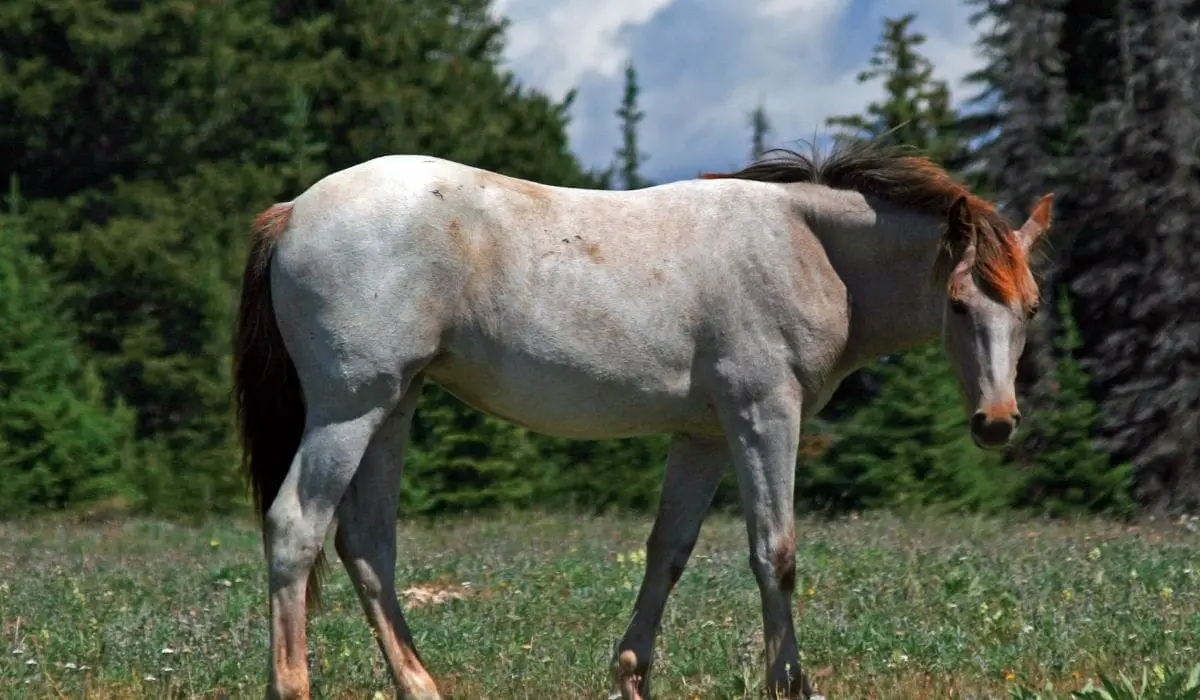
Mastering the craft of breeding roan horses involves a thorough understanding of the interplay between their unique coloration and genetics. Breeders must be adept in the art of selecting parentage that will yield foals with the desired aesthetic and robust health. This practice requires a steadfast commitment to the welfare of the horses and adherence to principles that ensure the continuation of the roan horse’s genetic purity.
Key Strategies for Roan Breeding Success
To perpetuate the roan lineage, breeders must make informed decisions based on a deep knowledge of genetic dominance and inheritance patterns. It’s essential to make breeding choices that avoid the risks associated with certain genetic combinations, therefore promoting the overall health of the roan population.
Advancing Roan Genetic Diversity
Managing the genetic diversity within roan populations is critical to preventing genetic stagnation. Tactics to achieve this include:
- Introducing fresh genetics by incorporating horses from outside the roan gene pool.
- Meticulously documenting lineage and genetic test outcomes to guide future pairings.
These methods help maintain a robust and diverse roan equine community.
Responsible Roan Breeding Practices
With the breeding of roan horses comes a responsibility to mitigate the potential for inherited disorders. Ethical breeding practices are characterized by:
- Conscientious health screening to detect and manage heritable diseases.
- Preventing close inbreeding to reduce the likelihood of genetic issues.
- Ensuring transparency regarding the genetic status of sale horses.
Adhering to these guidelines promotes the responsible propagation of roan horses.
Comprehensive Care for Roan Breeding Stock
Care for roan horses in a breeding context encompasses more than genetics. It includes:
- Health monitoring to ensure suitability for breeding.
- Dietary plans catered to the unique requirements of pregnant mares and their foals.
- Adoption of best practices for safe and healthy foaling.
Such meticulous care ensures the thriving of roan horses within breeding programs.
Aligning Breeding with Roan Market Preferences
Breeders must be attuned to the equine market’s preferences for roan horse characteristics while balancing these demands with the need to maintain genetic health and animal welfare. This approach allows breeders to fulfill the expectations of roan horse aficionados responsibly.
Supporting Growth in Roan Breeding Expertise
Newcomers to roan horse breeding can benefit significantly from educational resources and guidance from seasoned professionals. Opportunities for growth include:
- Partaking in educational events focused on equine genetics and breeding.
- Building connections within breed associations and learning from veteran breeders.
These experiences are invaluable for breeders aiming to contribute positively to the roan horse community.
Maintaining the Majesty of Roan Equines
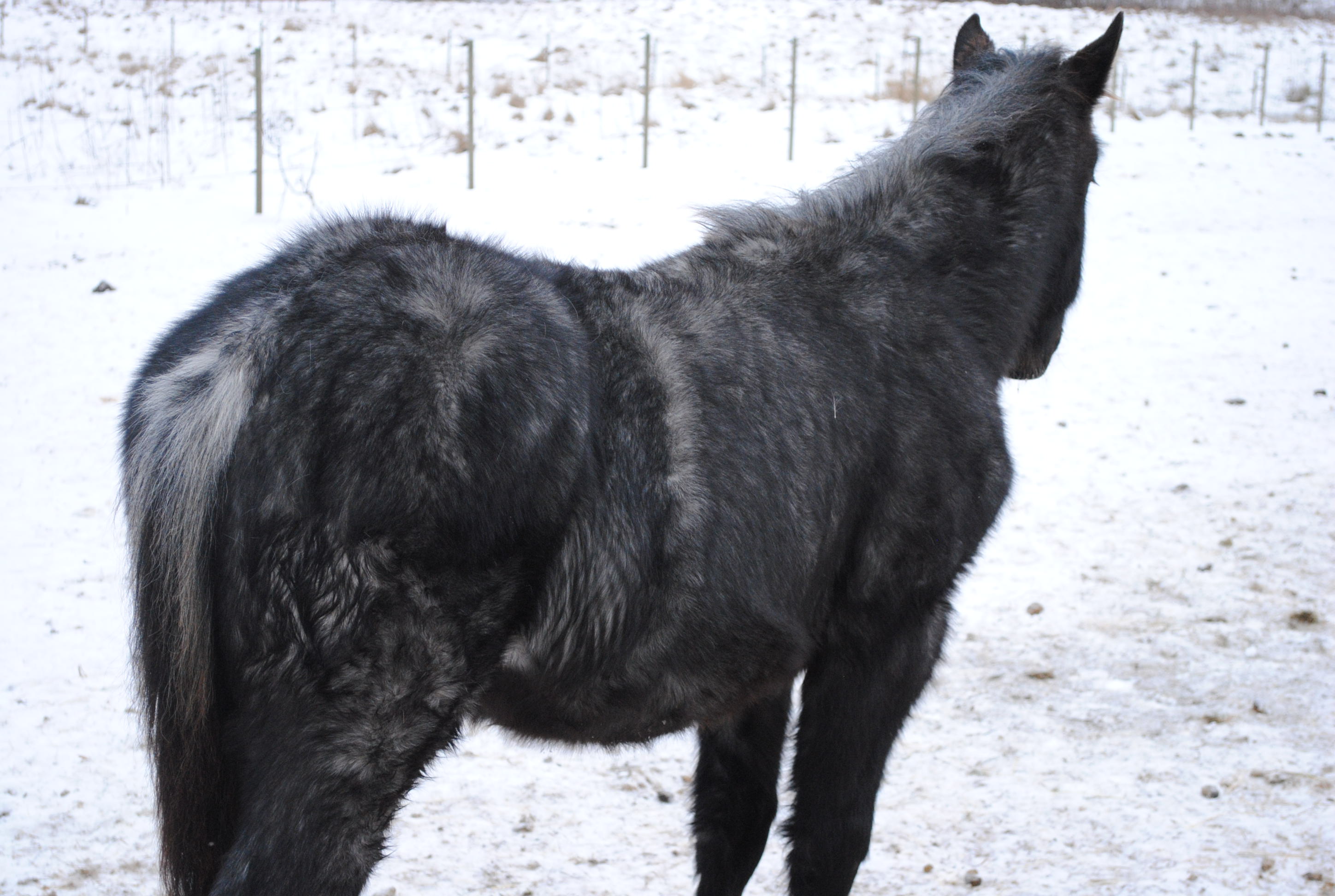
To preserve the well-being of roan horses, a holistic approach is essential. This encompasses conscientious skincare, customized nutrition, ample exercise, and vigilant health assessments. Such dedication ensures the preservation of their striking coat and overall health.
Skincare and Coat Maintenance
Regular grooming is integral to the care of roan horses, aiding in early detection of skin issues that may be hidden by their unique coat. A comprehensive grooming regimen should include:
- Brushing to enhance the coat’s shine and remove debris.
- Using suitable equine shampoos for bathing, respecting the horse’s skin pH.
- Examining the skin for any concealed irritations or injuries.
These grooming practices are vital for the horse’s comfort and the prevention of dermatological problems.
Customized Dietary Plans
Roan horses benefit from a diet formulated with their specific needs in mind, which supports their overall health and the beauty of their coats. Dietary considerations should include:
- Quality forage as a dietary staple.
- A balanced blend of vitamins and minerals appropriate for their life stage and workload.
- Constant access to fresh water to aid in hydration and digestion.
Tailoring their feeding regimen helps sustain their energy levels and coat vibrancy.
Physical and Mental Health
An exercise routine tailored to roan horses is crucial for their physical conditioning and mental engagement. Activities should encompass:
- Ample turnout time for natural movement.
- Training sessions aligned with the horse’s discipline and skill level.
- Stimulating exercises that foster alertness and lower stress.
These methods contribute to a well-rounded and content horse.
Proactive Veterinary Interventions
Consistent veterinary care is fundamental in promoting the health of roan horses. Proactive healthcare includes:
- Vaccinations against prevalent equine diseases.
- Dental examinations to support effective eating.
- Customized parasite control strategies.
Working closely with an equine veterinarian ensures tailored healthcare strategies for roan horses.
Special Health Considerations for Roans
Roan horses may face unique health challenges that necessitate attentive care. These challenges may include:
- Weather-related skin conditions.
- Coat pattern-related concealment of injuries or skin issues.
- Genetic health predispositions common within roan horse populations.
Timely veterinary care is crucial to address these issues and maintain optimal health.
Habitat and Well-being
The living conditions of roan horses can have a significant impact on their health. It is important to ensure:
- Stables that provide ample shelter and air circulation.
- Pastures that are safe and free of harmful plants and obstacles.
- Clean, absorbent bedding to support cleanliness and minimize irritation risks.
An ideal living environment helps prevent health issues and promotes the well-being of roan horses.
Recognizing Behavioral Indicators
Changes in the behavior of roan horses can signal health problems. Caretakers should be alert to:
- Any shifts in eating or drinking patterns that could indicate issues.
- Changes in mood, such as irritability or apathy.
- Reactions to touch or grooming that might suggest discomfort.
Noticing these signs promptly can lead to quick interventions for health concerns.
Thorough care practices are key to ensuring that roan horses maintain their impressive appearance and experience a life of good health and contentment.
If you’re passionate about horses and eager to expand your knowledge on different horse breeds and coat patterns, you’ve come to the right place. For instance, have you ever wondered about the striking appearance of a roan horse? Our article delves into the details of what a roan horse is. Additionally, you can explore the characteristics of various horse breeds, such as the versatile and historic Morgan horse, the hardy and free-spirited Bronco horse, and the intelligent and adaptable POA horse. Each link offers a gateway to understanding these remarkable equine friends better.
Roan Horses Across Breeds
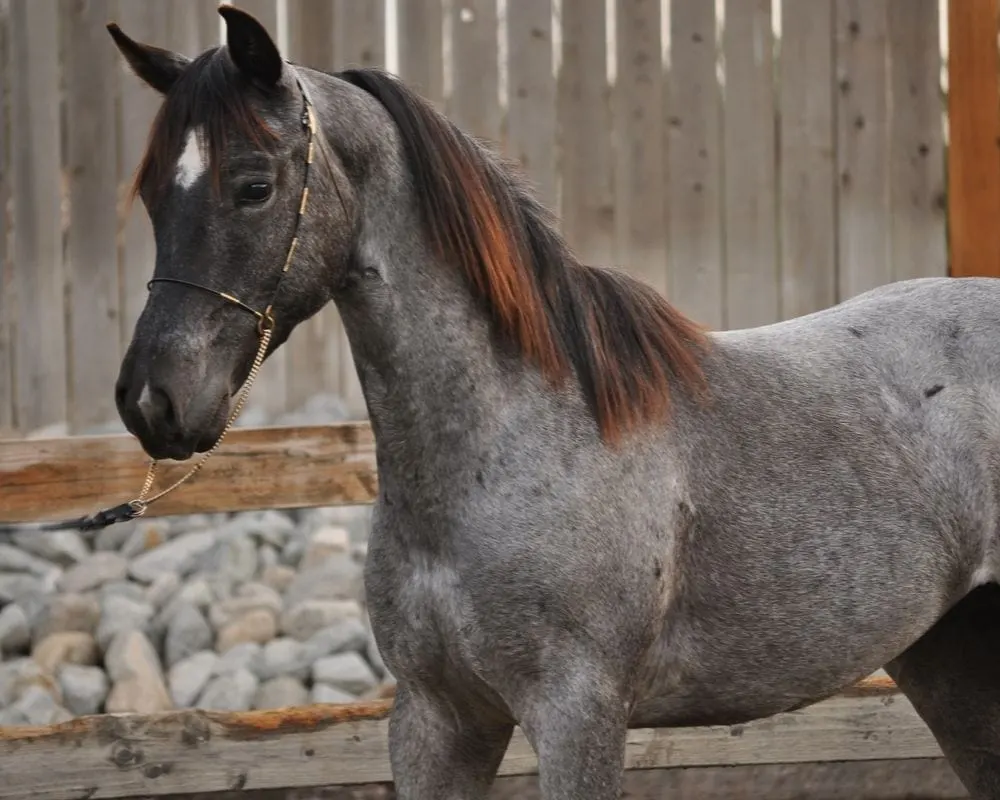
Roan horses are not limited to a single breed; they can be found across a variety of equine breeds. Their presence in different breeds showcases the versatility and widespread appeal of the roan coat pattern.
Incorporating Roans into Different Horse Breeds
Incorporating roans into different horse breeds is a testament to their adaptability and the universal appeal of their coat. The roan gene can be found in breeds ranging from the sturdy Quarter Horse to the elegant Andalusian, and each breed expresses the roan pattern in its unique way.
Roans in Equestrian History and Culture
The roan horse has a storied place in equestrian history and culture. They have been immortalized in works of art, celebrated in literature, and have become symbols of beauty and resilience in many cultures. The history of roan horses is as colorful as their coats, and they continue to captivate the hearts of horse lovers around the world.



